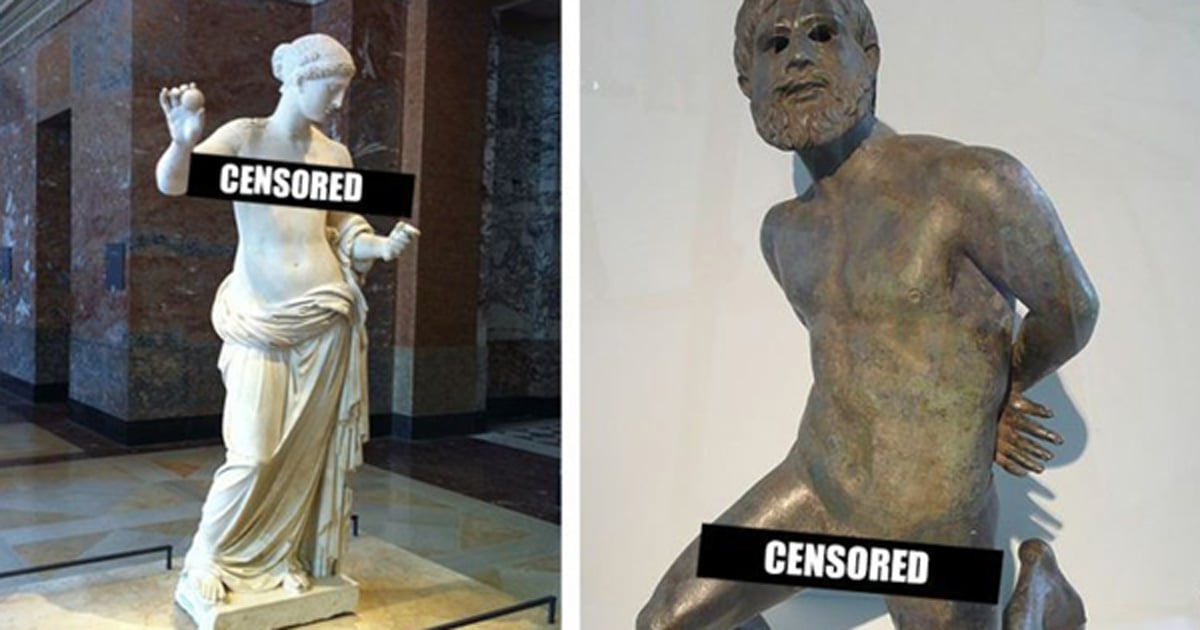Censored! Facebook Blocks Images of 2,000-Year-Old Roman Statues for Nudity
A Geneva Museum of Art and History said that Facebook blocked them from using images of two Roman statues – a half-naked marble Venus and a bronze of a nude, kneeling captive – to promote an upcoming exhibition, citing nudity as the reason.
The museum posted on Twitter that they had wanted to use the images of the two statues to promote their “Caesar and the Rhone” exhibit, an exposition featuring items retrieved from the river Rhône during underwater excavations that highlight Julius Caesar’s invasion of the region in the 1 st century BC. However, they explained that Facebook had “prevented us from it, because of their nudity.”
Instead, the museum posted the images of the statues on Twitter with ‘censuré’, the French word for “censored”, over the statues’ sensitive parts, adding: “Maybe it’s time that this platform changes its policy for museums and cultural institutions?”
Nous voulions promouvoir l'exposition "César et le Rhône" en utilisant ces deux œuvres mais #Facebook nous l'interdit, en raison de leur nudité...
Peut-être serait-il temps pour cette plateforme de changer sa politique pour les musées et les institutions culturelles? pic.twitter.com/RSHn6g8O8F— MAH Genève (@MAHgeneve) February 1, 2019
According to Time magazine, a spokeswoman for the museum, Sylvie Treglia-Detraz, said when they first tried to post the images, they received the following response from Facebook: “We don’t allow ads that depict nudity, even if it isn’t sexual in nature. This includes the use of nudity for artistic or educational purposes.”
It was only after enquiries from Associated Press and other media institutions that Facebook backtracked and lifted the censorship of the images, along with issuing an apology to the museum.
The marble statue of “Venus of Arles”, which is housed in the Louvre Museum in Paris, is a 1.94-meter-high (6.4 ft) sculpture of the goddess Venus posed with one arm outstretched and a robe draped around her waist, while the first-century BC bronze of a nude man with this hands bound behind his back shows a captive Gaul awaiting his death sentence and symbolizes Rome’s triumph over Gallic tribes.

Left: Venus of Arles statue in the Louvre Museum (CC by SA 2.5). Right: Bronze statuette of a captive Gaul awaiting his death sentence, last quarter of 1st century BC, found during excavations in the Rhone River, Musée de l'Arles antique, Arles, France (CC by SA 2.5)
This is not the first time that Facebook has censored art with nudity. Along with numerous iconic works by Peter Paul Rubens, a 30,000-year-old carving of a voluptuous naked woman known as the “Venus of Willendorf” statuette, was also censored by the social media giant. Staff at The Natural History Museum voiced their outrage at the time and said in a statement: “We think that an archaeological object, especially such an iconic one, should not be banned from Facebook because of "nudity", as no artwork should be.”
- Iconic 30000-Year-Old Ancient Female Dubbed “Dangerous Pornography” By Facebook
- The Real Reason That Men in Classical Portrayals Were Given Small Manhoods
- Pleasure, Procreation, and Punishment: Shocking Facts about Sex and Marriage in the Ancient World

Female nude, Venus of Willendorf 22000 – 24000 BC, is the pride of the Naturhistorisches Museum in Vienna. Image: S. Zucker ( CC BY-NC-SA 2.0 )
Last year, during disagreements over censorship of Peter Paul Rubens’ artworks, Facebook wrote to The Associated Press saying that “as part of a longer running and continuous review process, we want to make sure that museums and other institutions are able to share some of their most iconic paintings. We are thus currently reviewing our approach to nudity in paintings in ads on Facebook”.
Clearly, the revised approach to nudity in art hasn’t been widely implemented yet as Facebook continues to censor ancient works of art that have been showing humans in their natural form for thousands of years.
Top image: Left: Venus of Arles statue in the Louvre Museum: Bronze statuette of a captive Gaul awaiting his death sentence, last quarter of 1st century BC, found during excavations in the Rhone River, Musée de l'Arles antique, Arles, France. Credit: diyphotography.net



















